How to Rank Higher On Google
(13 Steps)
(13 Steps)
Written by Brian DeanIn collaboration with Semrush

In this post, I’ll show you EXACTLY how to get higher rankings in Google.
In fact, this is the same process I’ve used to rank #1 in Google for “SEO checklist”:
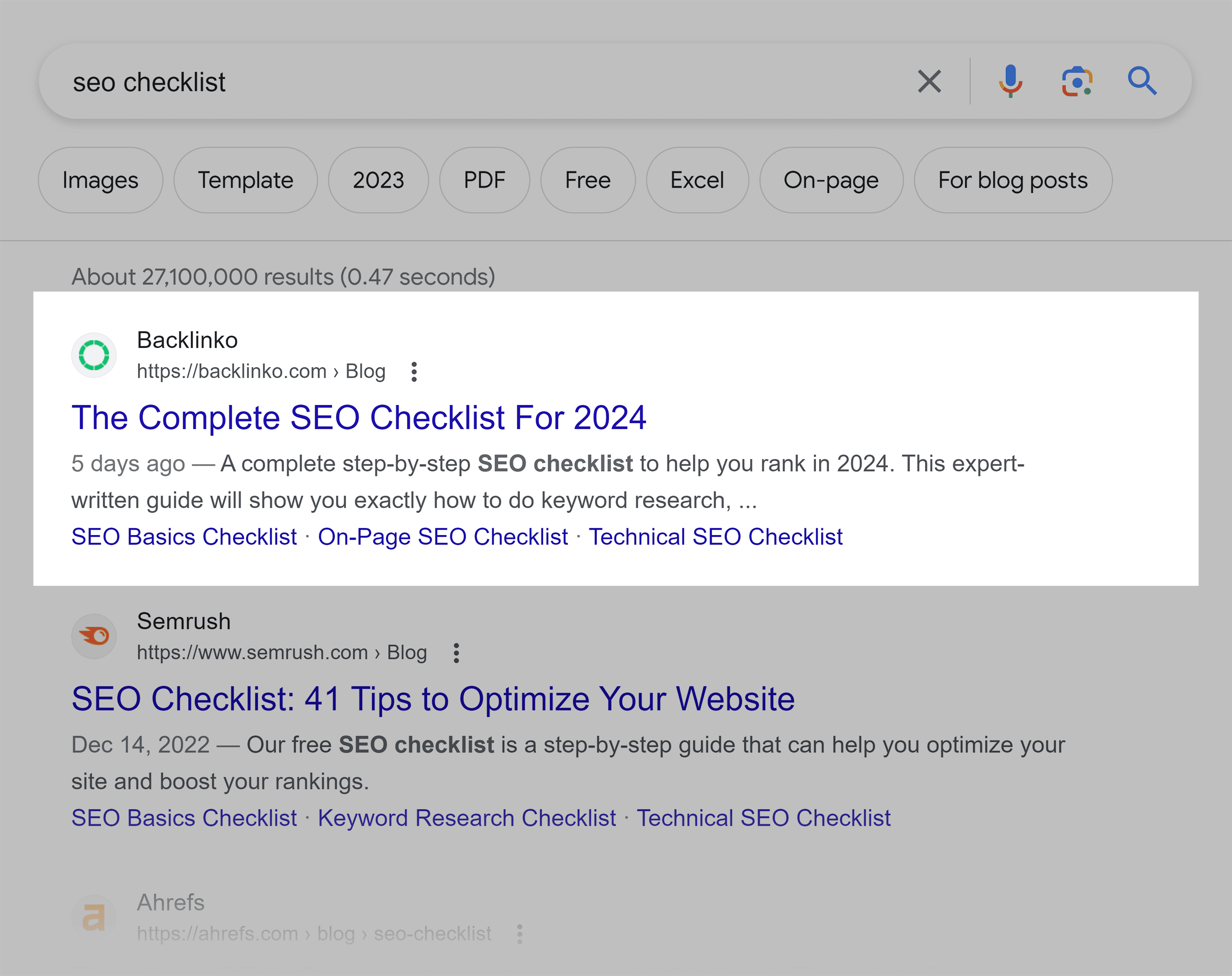
And “link building tools”:

So if you want to rank higher in Google in 2024 and beyond, you’ll love this new guide.
How Does Google Rank Pages?
Google’s ranking algorithms are designed to sort through billions of webpages to meet search intent. By offering the most relevant and useful results within the shortest time possible.
Google uses algorithmic processes that consider many different factors to evaluate the quality, relevancy, and utility of an answer to a search query.
These algorithms are extremely complex. But forming a comprehensive SEO strategy—and following the steps in this guide—can help you rank higher on Google.
Step #1: Improve Your On-Site SEO
Here’s the truth:
On-Page SEO is one of the FASTEST ways to improve your Google rankings.
That’s because you can optimize your page in about 2 minutes. And start to see a rankings boost within days.
Question is:
How do you optimize your site around your target keywords?
First, make sure that your keyword is toward the beginning of your title tag.
Here’s an example:
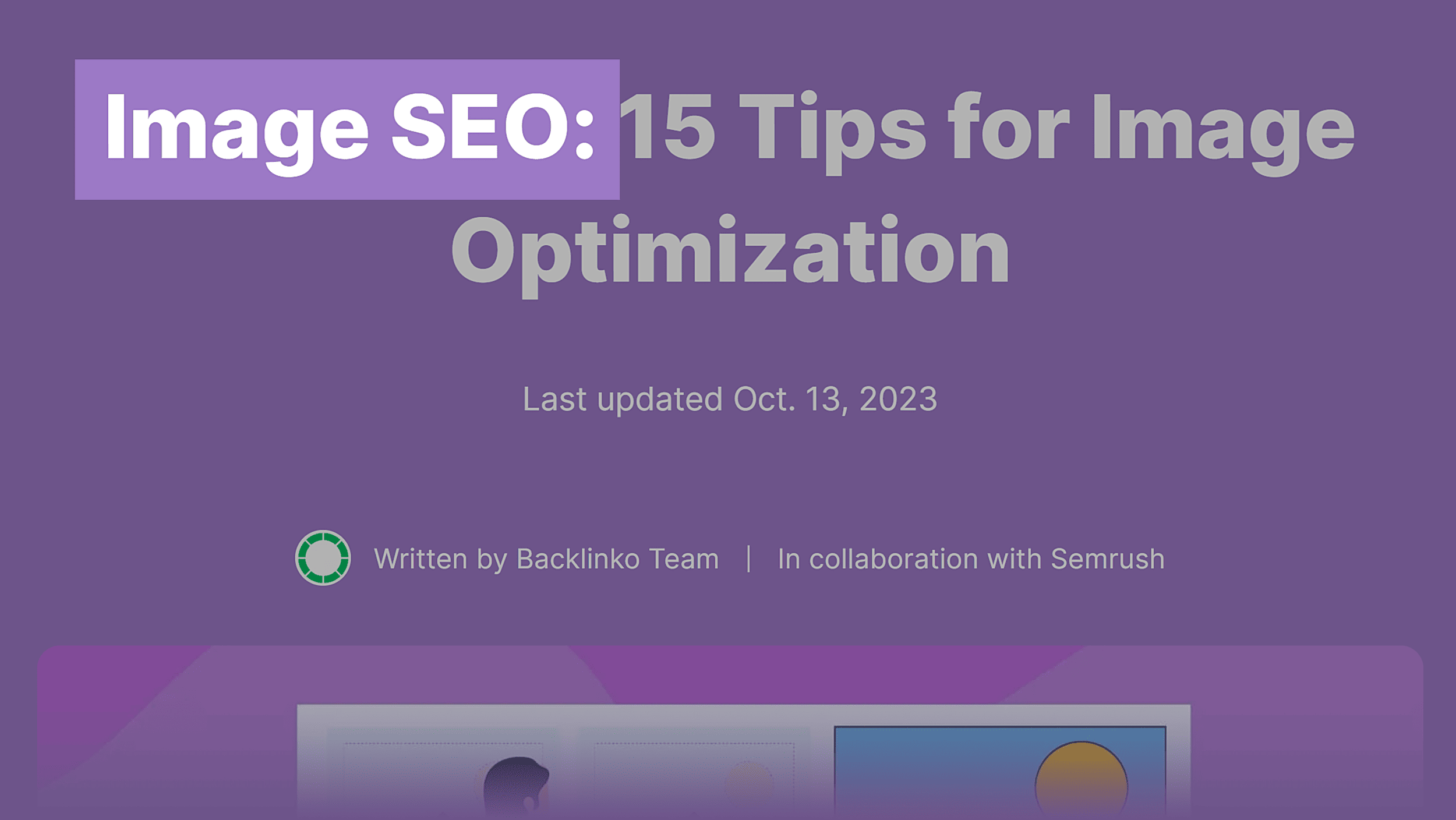
This is called “Frontloading” your keyword.
Why is this important?
Well, Google reads your page title to help it understand what your page is about.
And so putting your keywords at the start can suggest to its algorithms that these words are the most important. And therefore what the page is relevant to.
For example, my target keyword on this page is “SEO copywriting”:

As you can see, my title tag starts off with that keyword.

It’s not always possible (or logical) to have the target keyword immediately at the start. But generally, the closer to the start, the better.
Rankings aside, it also helps a user skimming through search results instantly understand what your page is about. Which may make them more likely to click.
Second, aim to create long-form content that comprehensively covers your target topic.
Our analysis of Google’s key ranking factors found that the average Google first page result contains 1,447 words.

And I can tell you from experience that longer content does tend to rank best in search engines.
For example, one keyword that we rank #2 for is “Mobile SEO.” And this is a REALLY competitive keyword.
I’m competing against giant authority sites like Semrush and Search Engine Journal.

This is why I made sure my page covered EVERYTHING anyone would possibly want to know about optimizing their site for mobile devices.
In fact, my content is 4,330 total words.

Obviously, there are times when long-form content doesn’t make sense (like for an ecommerce category page). But if you can publish long content you generally should publish long content.
Finally, add your keyword naturally throughout your page.
This isn’t about keyword stuffing or anything like that.
Instead, when you add relevant terms to your page, you tell Google:
“This page is about this search query!”
Which can help you get a nice rankings boost.
For example, I wanted to improve my rankings for the keyword “squeeze page.”
So I sprinkled that term a handful of times on my page where it made sense.

And that page now ranks pretty well for target terms:

You can quickly check for a range of on-page SEO issues with Semrush’s On Page SEO Checker.
It’ll provide you with an overview of your top pages to optimize. And give you insights into your potential traffic gains if you make the right changes.

It’ll even show you a list of ideas for these pages. Covering various aspects of on-page SEO.

Action these ideas to help improve your on-page SEO. And rank higher in Google.
Note: A free Semrush account lets you set up one On Page SEO Checker campaign. Or you can use this link to access a 14-day trial on a Semrush Pro subscription.
Step #2: Add LSI Keywords to Your Page
LSI keywords are an advanced on-page SEO tactic.
But: what the heck are LSI keywords?
They’re words and phrases that are related to the topic of your page.
For example, here are some example LSI keywords for the target term “Cold Brew Coffee”:
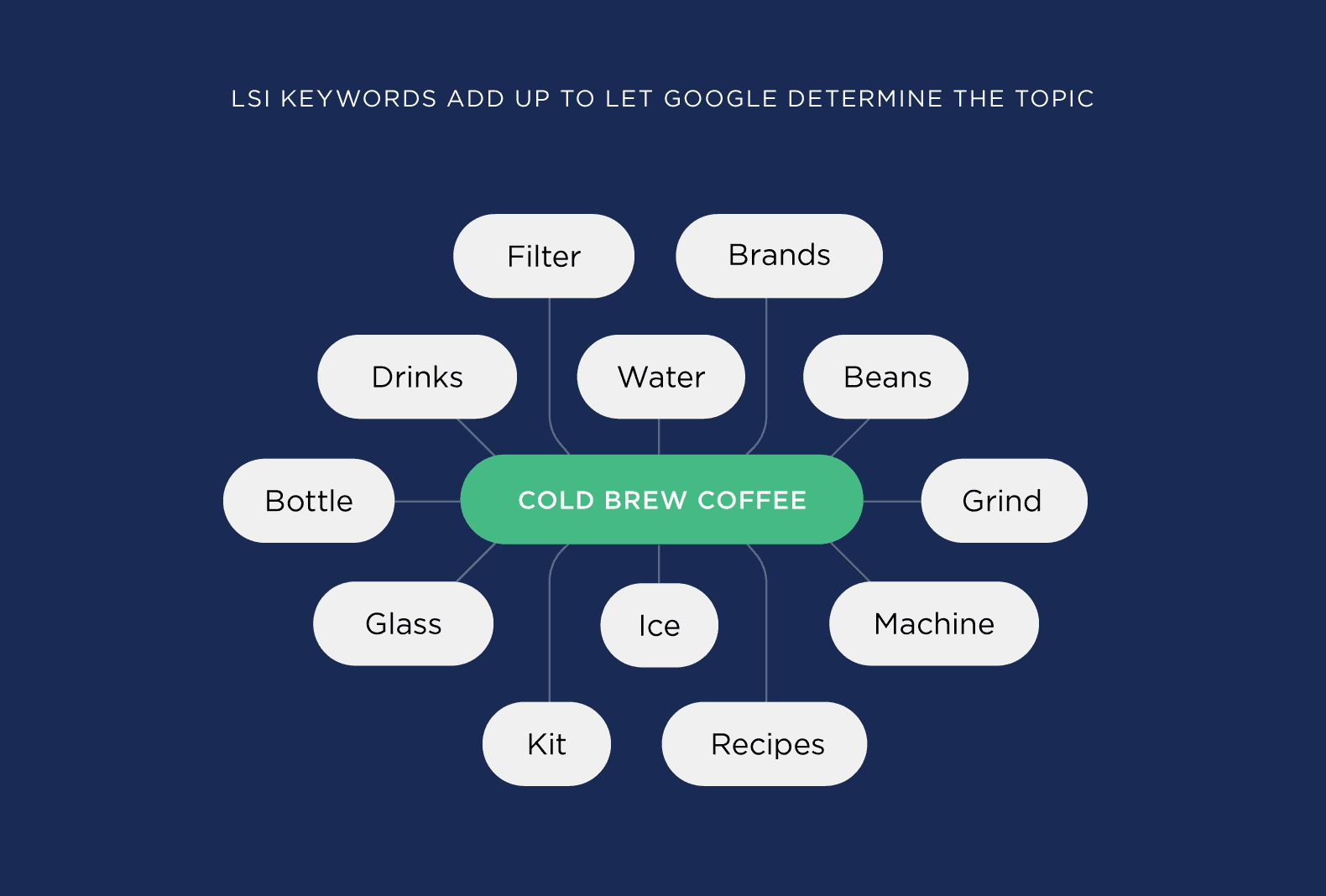
These LSI keywords confirm to Google that your content is actually about that topic.

How do you find and use LSI keywords on your site?
One quick way is to use Google itself.
Start typing in one of your target seed keywords. And let autocomplete do the rest:

Pay attention to the words in bold. These are words and phrases Google is telling you are related to your target term.
Based on searches made by real people.
Repeat this for your other target keywords and include these LSI keywords naturally in your content.
Step #3: Monitor Your Technical SEO
Technical SEO problems can really hurt your site’s rankings.
So they’re worth paying attention to.
The first thing I recommend is to double-check that your site is optimized for mobile devices.
It’s 2024. And over half the world’s website traffic is on mobile devices.
One way to check your site’s mobile optimization is by checking your Core Web Vitals.
Do this in PageSpeed Insights:

Or in Google Search Console:

I also recommend looking to see how quickly your site loads.
It’s no secret that how fast your site loads (page speed) has long been a Google ranking factor.

So go ahead and run your site through site speed tools like PageSpeed Insights (above) and WebPageTest.org. They are free and give you a detailed outlook to help clean up any technical issues on your domain.

Next, head over to Google Search Console.
And go to “Indexing” > “Pages” in the sidebar.

If Google is having trouble indexing your site, they’ll let you know here.
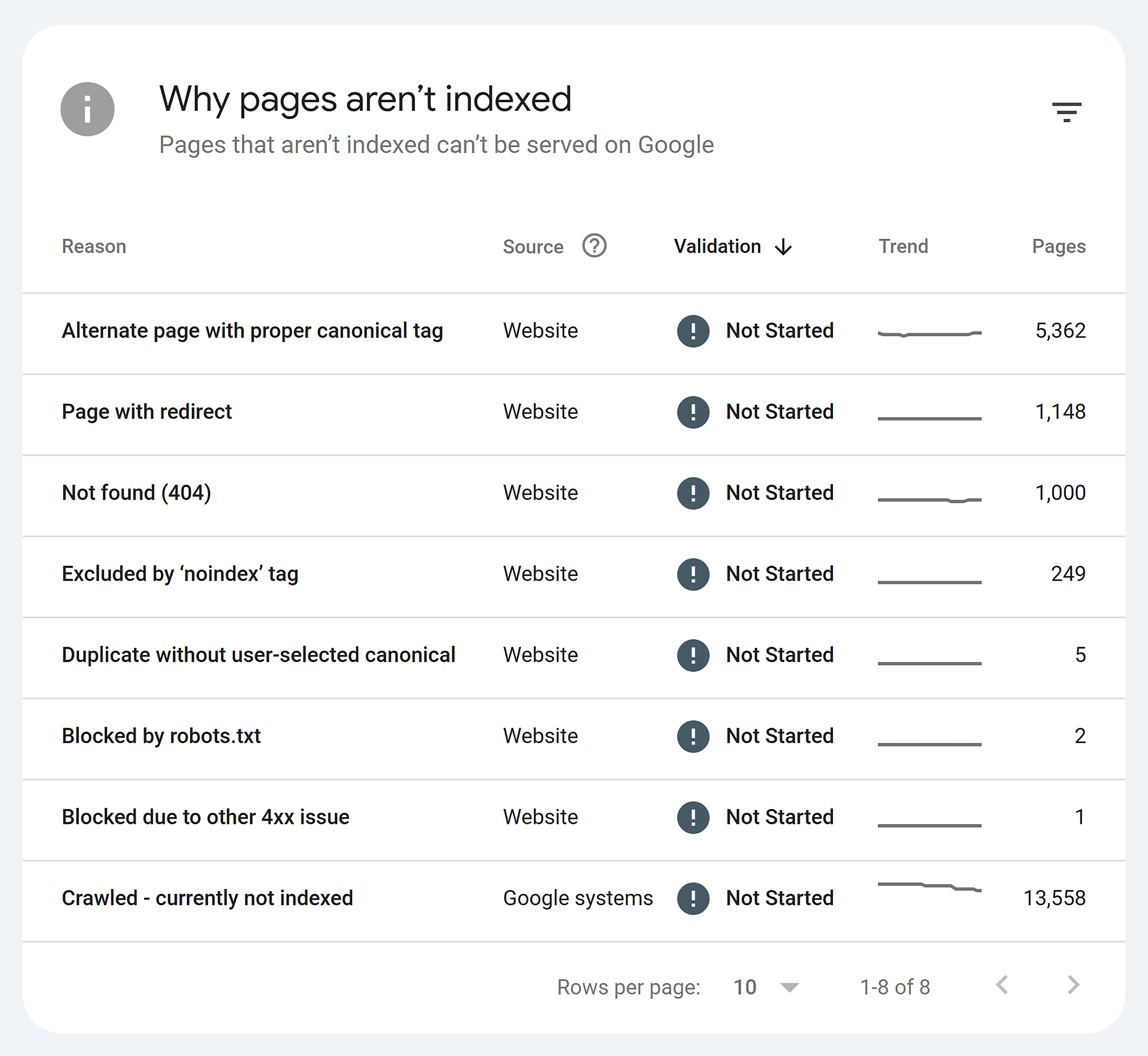
Finally, if your site runs on WordPress, I recommend using the Yoast SEO plugin.

Will this plugin magically improve your rankings?
No.
But it can help make your WordPress site SEO-friendly out of the box.
Step #4: Match Your Content to Search Intent
“Search Intent” is a vital consideration for any successful SEO campaign.
Why?
Thanks largely to RankBrain, Google can figure out if your site is a good fit for a specific keyword.
So the key in this step is to make sure your page gives a searcher EXACTLY what they’re looking for. By meeting their intent.

Let me explain how this works with a real-life example.
Several years ago I wanted to rank for the keyword “Conversion Rate Optimization.”
So we spent WEEKS working on this giant list of CRO techniques.

At first, the content did really well. It was getting a decent amount of search engine traffic every month.

But over time, Google figured out that people searching for “Conversion Rate Optimization” didn’t want a giant list of techniques.
And, as you can see from this old Google Analytics screenshot, organic traffic to that page slowly declined.

So after some time, I decided to figure out what the search intent for “Conversion Rate Optimization” actually was.
First, I thought about what someone typing that phrase into Google is looking for.
And I realized that they probably want content that includes:
- A definition of what CRO actually is
- A description of how CRO works
- Examples of CRO in action
- Tips for getting started
Second, I looked at what was already ranking on the first page.
And I quickly noticed that pretty much every result on the first page included all the stuff that my content was missing.

(Mostly in the form of a giant beginner’s guide.)
So I completely reworked my content from scratch.
I turned that list of techniques into Conversion Rate Optimization: The Definitive Guide.

Now that my page matches search intent, it now gets 214% more organic traffic than before.
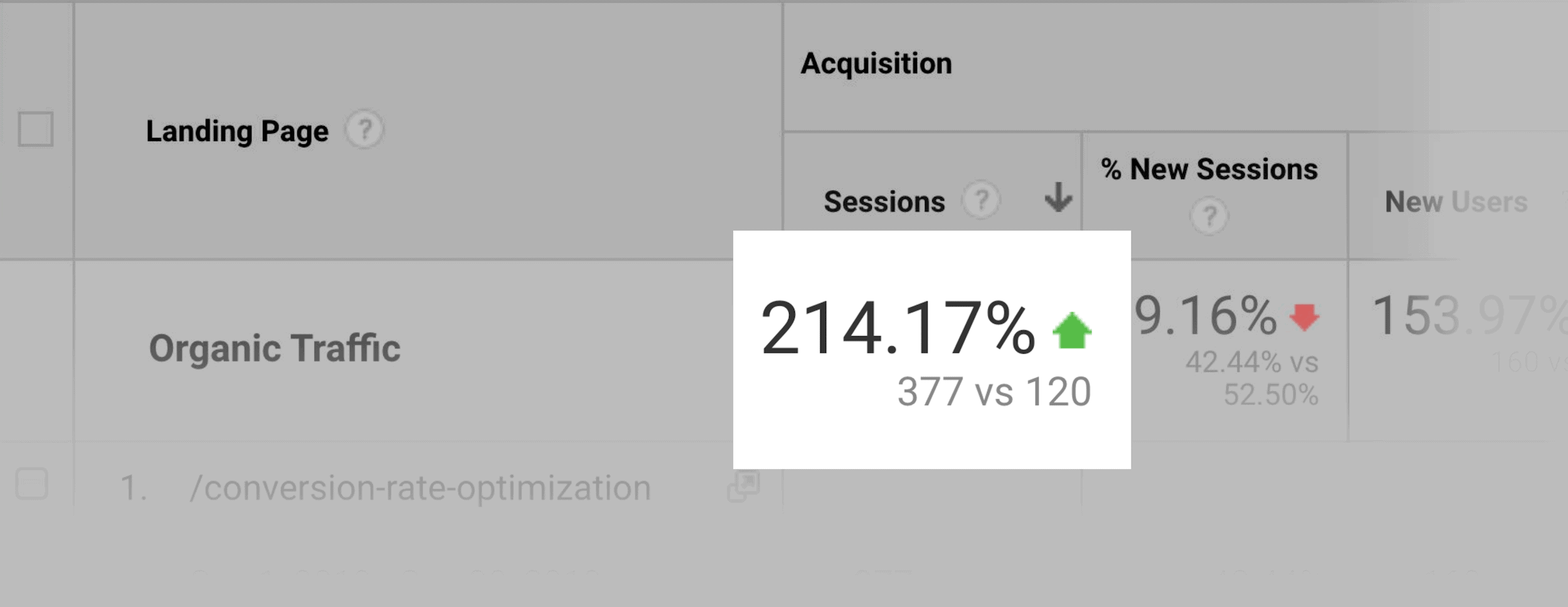
Bottom Line? If you want to improve your Google ranking, your page needs to be a GREAT fit for what someone’s searching for.
When you do, Google will WANT to show your site to more people. Which is why giving Google what it wants is the foundation of any good SEO strategy.
Unsure of a target keyword’s search intent? Instantly find out by plugging it into Semrush’s Keyword Overview tool:

Step #5: Reduce Your Bounce Rate
Our next step is to improve your site’s bounce rate.
Why does this matter?
Well, Google doesn’t like to see people landing on a site and quickly bouncing back to the search results.
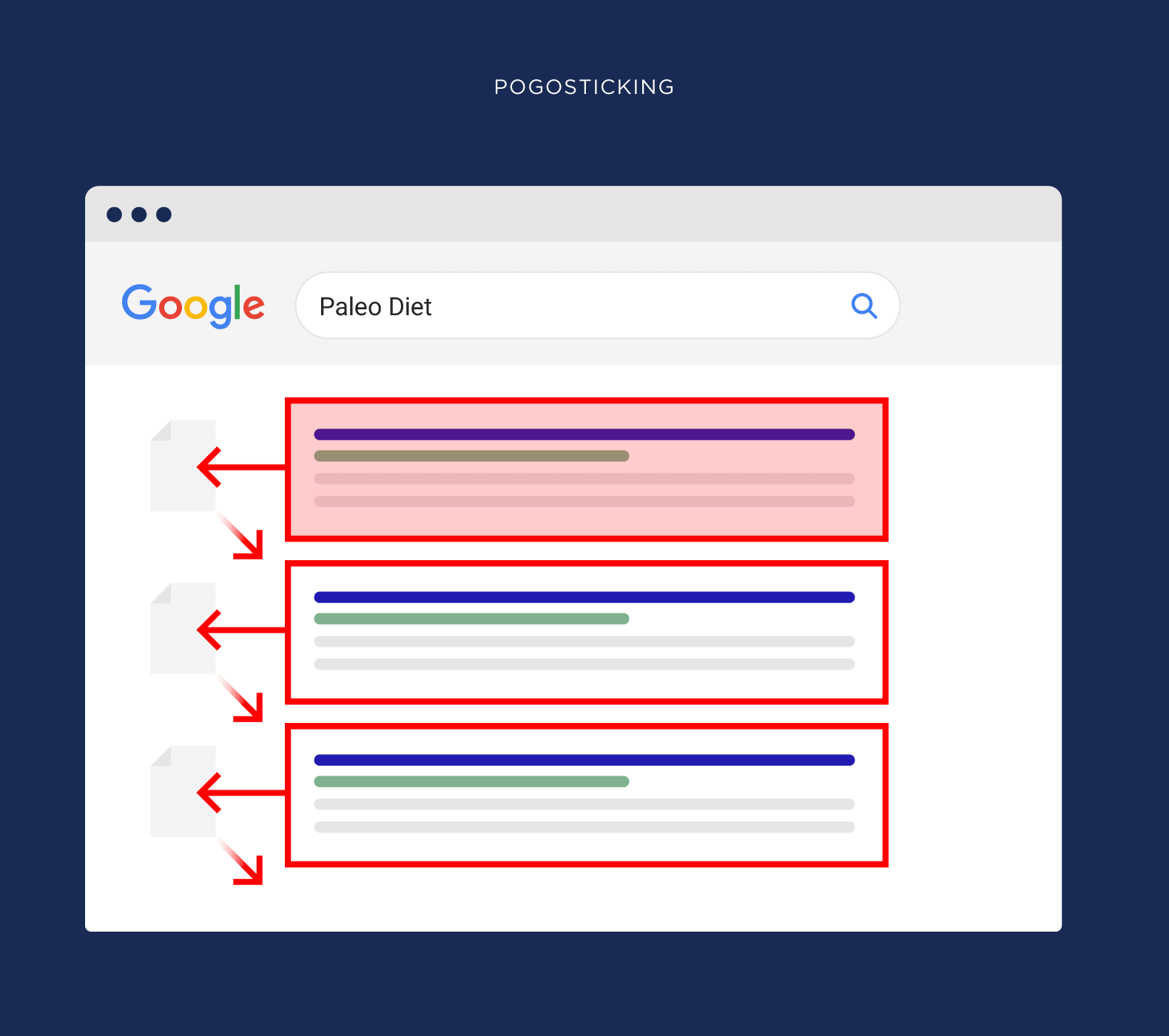
This is (often) a clear sign to Google that people aren’t happy. And if users aren’t happy, you can kiss your rankings bye-bye.
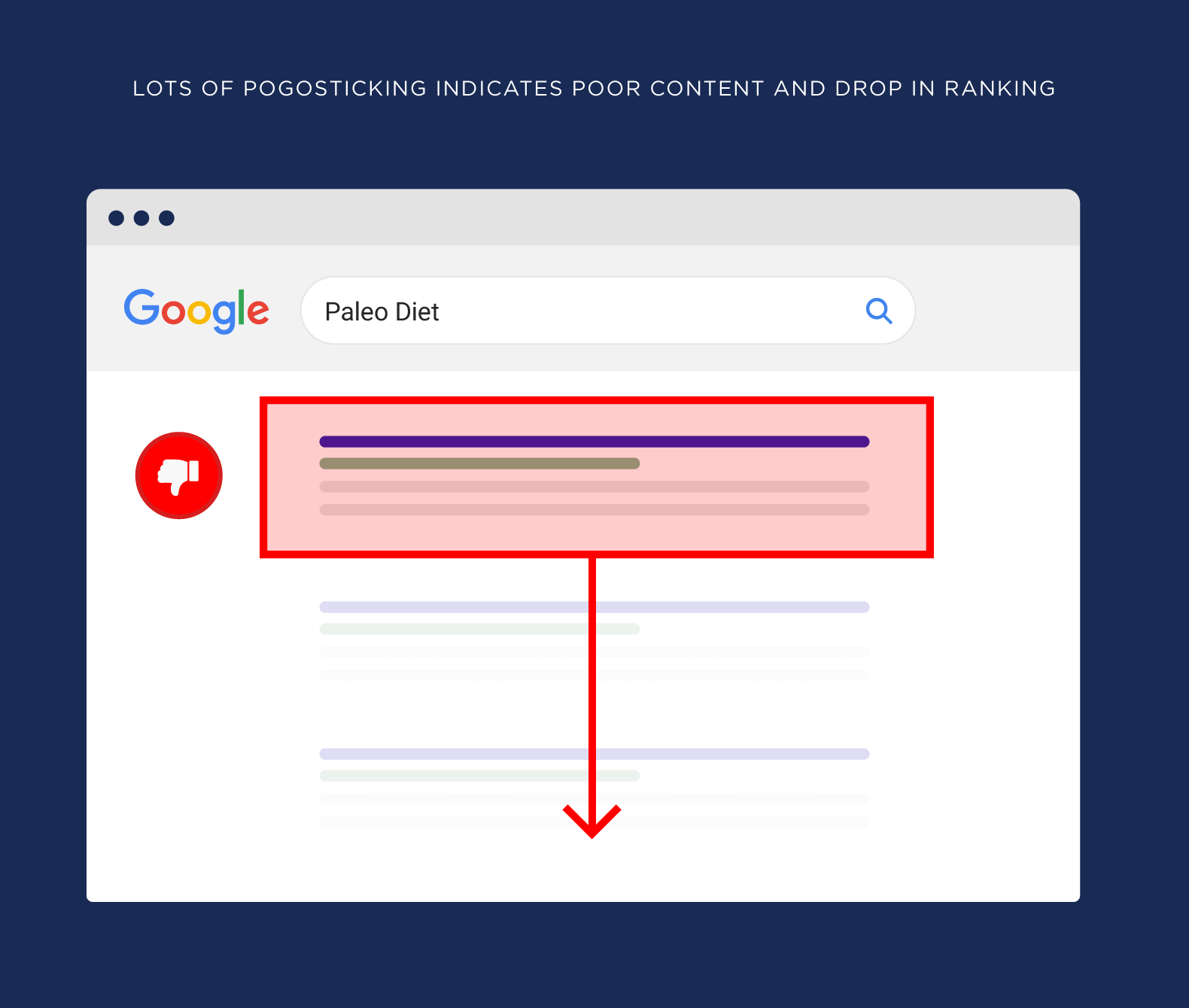
Needless to say, lining up your content with search intent is a GREAT way to improve your bounce rate.
After all, you’re giving a searcher what they’re looking for. Why would they bounce?
Note: If you give readers exactly what they need very quickly, they might bounce. And that’s not a bad thing in this case as the reader is satisfied. That’s why bounce rate on its own likely isn’t a ranking factor.
Besides meeting search intent, there are a handful of simple things you can do to reduce your site’s bounce rate.
First, I recommend looking at your site’s “above the fold” section.
This is the first thing people see when they land on your site. Before they scroll down.

And in my experience, people decide to bounce or not bounce largely based on what they see here.
The #1 thing you can do to improve your above the fold area is to push your content to the top. That way, Google searchers can easily find what they’re looking for.
For example, you can see that my content is at the very top of my page here.

You also want to structure your page so it’s easy for people to find what they’re looking for.
For example, you might have noticed that Backlinko posts feature a handy table of content.
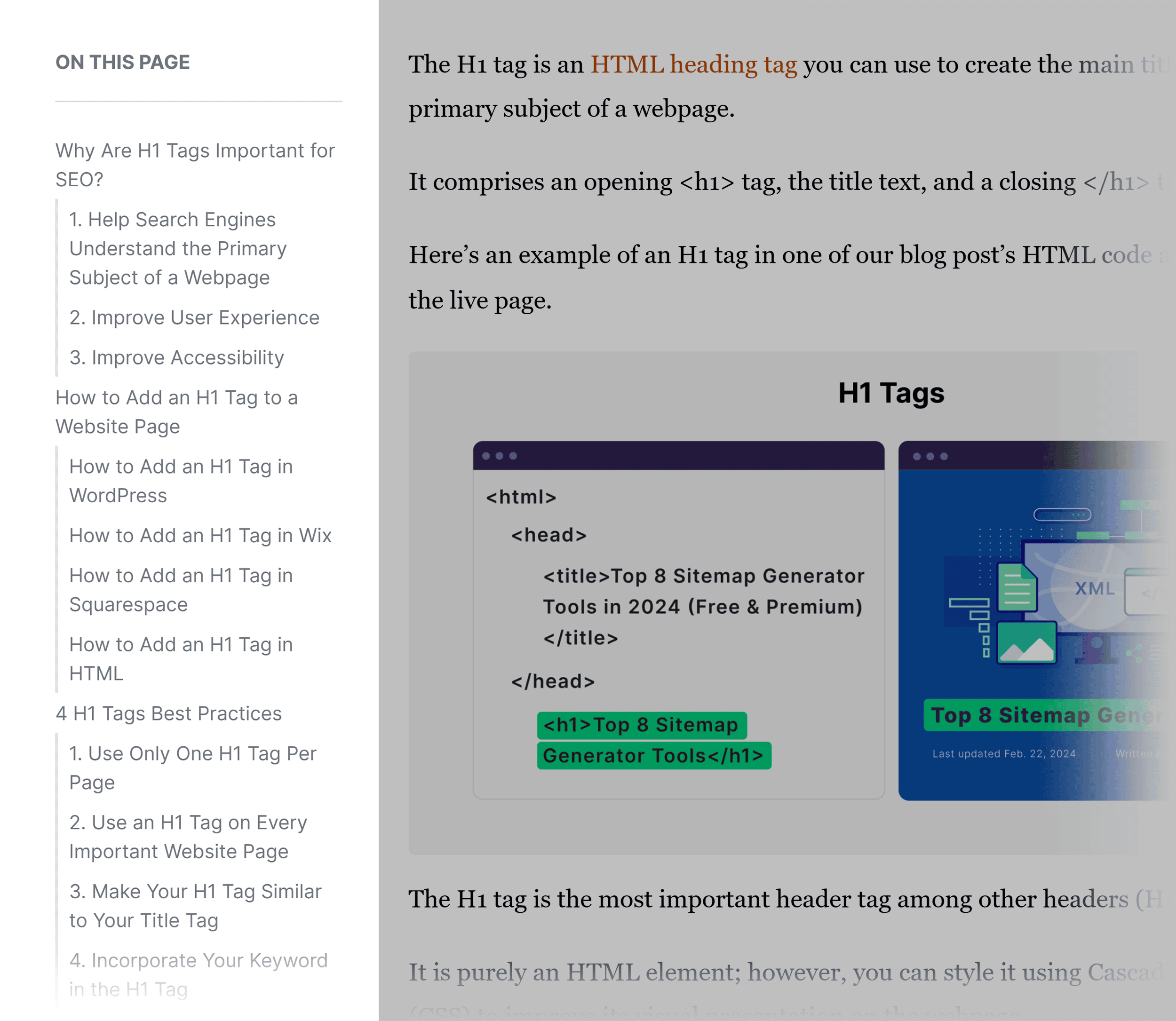
That way, people can jump directly to the step that they’re most interested in.
Lastly, add visuals, videos, charts, screenshots, or any useful visual content you can to your page.
This makes your content more compelling and easier to understand. Both of which can reduce your bounce rate A LOT.
For example, I add dozens of visuals to every single post.

And this helps keep my bounce rate super low.
Step #6: Find Even More Keywords to Target
At this point, you should start to see your site ranking higher in Google.
Now it’s time to get even MORE traffic to your site.
And the easiest way to do that?
Optimize your page around several different keywords.
Here’s the exact process:
First, head over to Google Search Console’s “Performance” report.
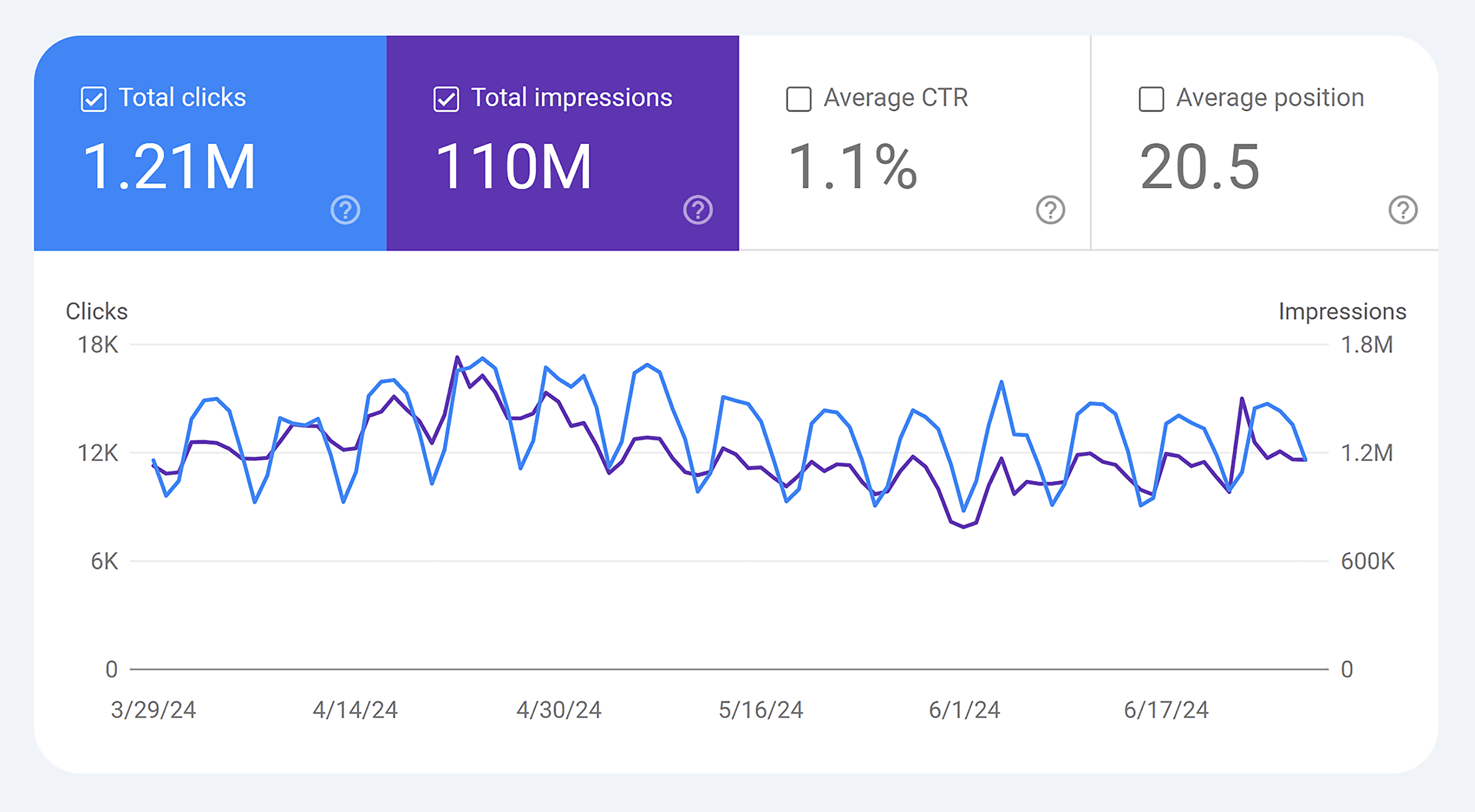
Next, scan through the queries that you rank for.

You’ll probably recognize most of these because you already optimized your webpages around these exact keywords.
But every now and again you’ll come across a keyword that you’re not optimizing for.
And if you’re ranking for that term by accident, imagine how easy it will be to rank if you actually TRY to rank for it.
For example, I’m getting a little bit of traffic from people searching for “youtube video description example.”

But I don’t have a page optimized around that exact keyword.
Instead, people searching for that keyword are finding this page from my site.
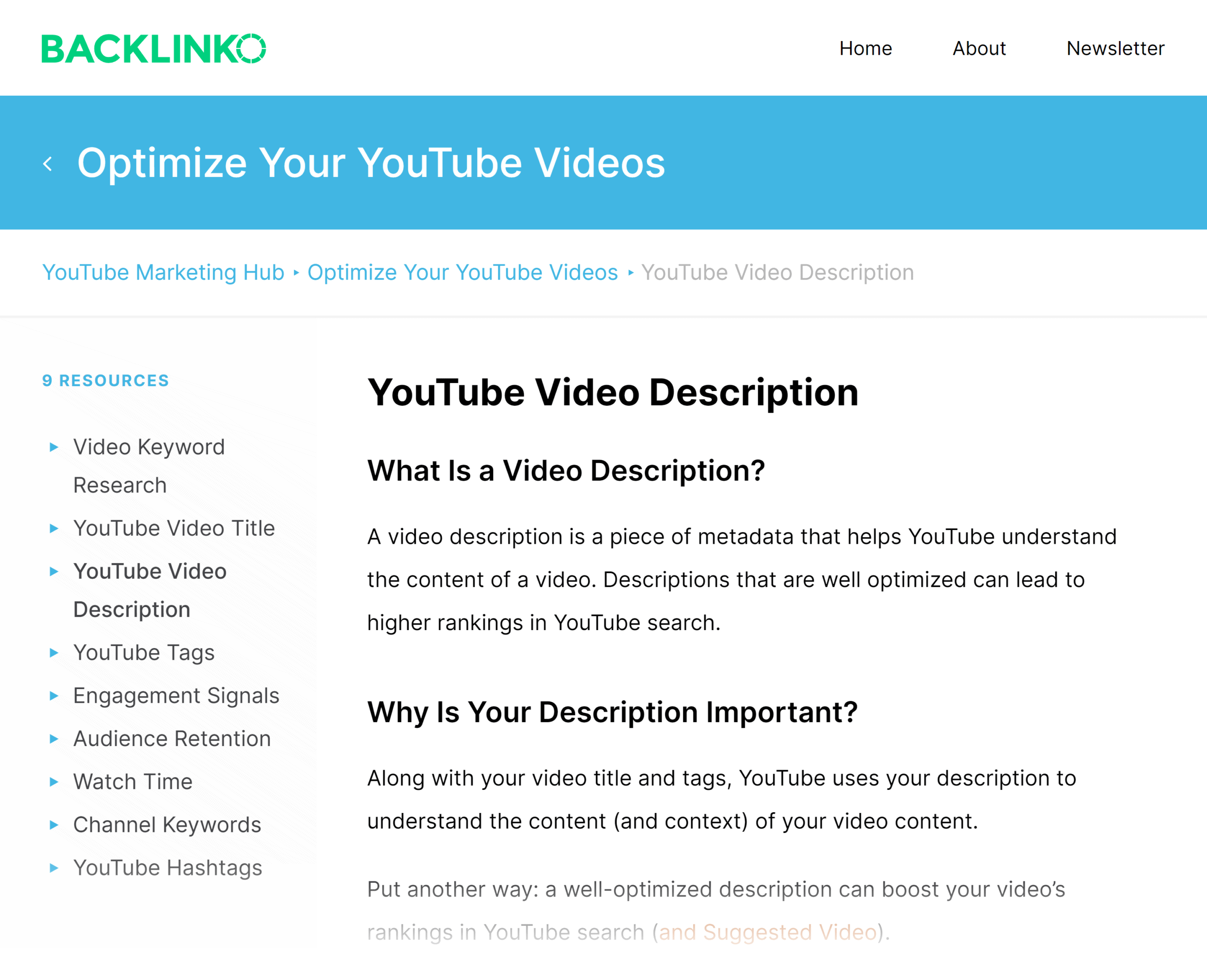
This page INCLUDES an example of a video description.
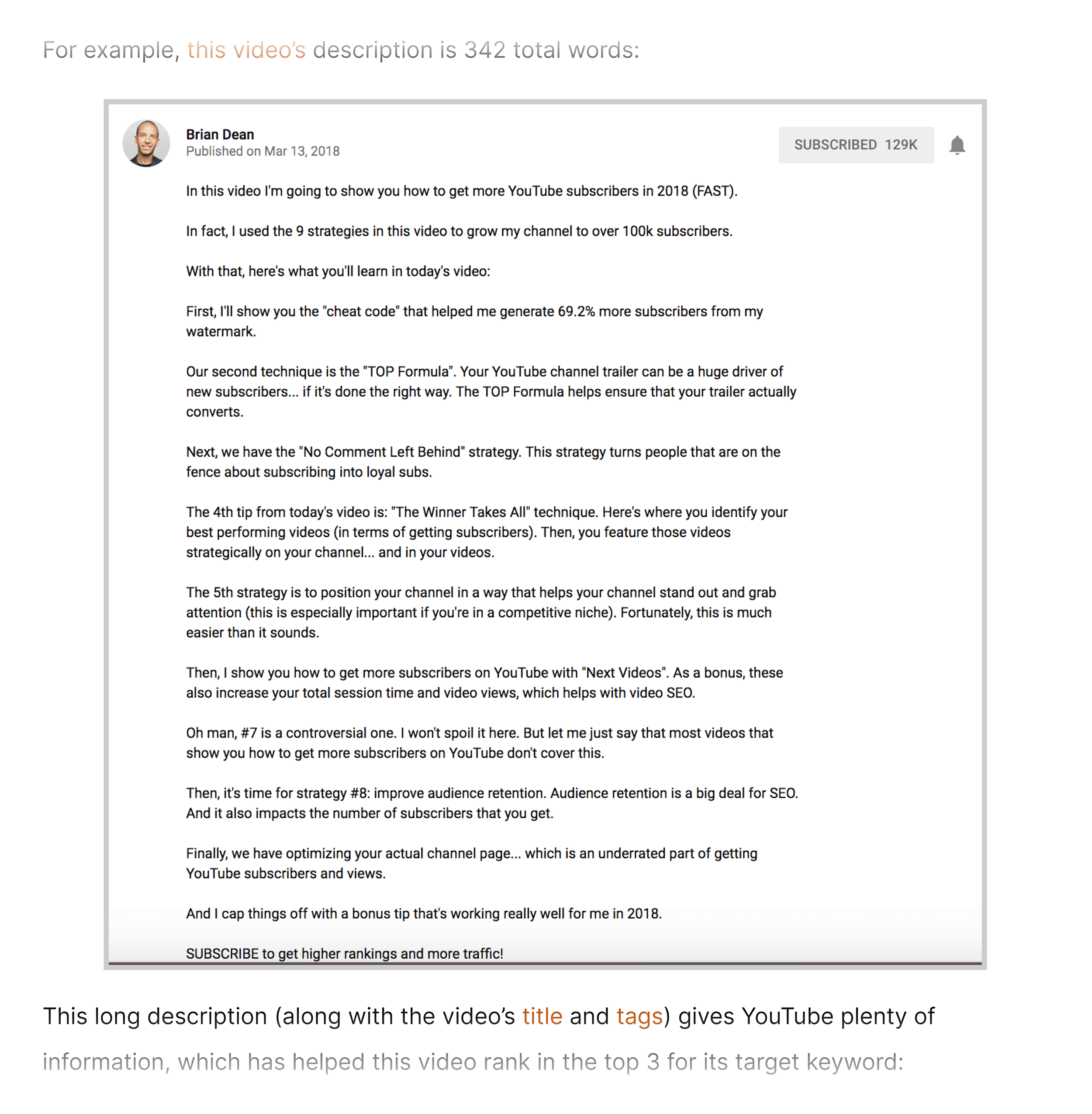
But it’s not really optimized around that term.
So I’d want to go back to that page, add that exact phrase a few times, and expand on the example a little bit.
I could also create a completely new page optimized around that keyword.
Either way works. Capitalizing on keywords I’m already ranking for without trying.
Step #7: Publish Insanely High-Quality Content
You’ve probably heard that to rank in Google “you need to publish high-quality content.”
And while this is true, it’s also super hard to take action on.
(After all, what does “high-quality content” actually mean?)
So yeah, you DO want to publish awesome stuff on your site.
But it needs to be the type of high-quality content that people share on social media and link to.
That’s because, as you might already know, Google’s algorithm takes into account backlinks.
The more backlinks your site has, the higher you may be able to rank.

And the best way to build backlinks to your site?
Publish content that people will actually link to.
(Also known as “link bait.”)
Here are a few ways to increase the odds that people will link to your content.
Become a Data Source
In other words:
Publish something that other people can cite in their blog content.
For example, in 2019, we partnered with Pitchbox for this huge email outreach study.

This post was packed with data, stats, and figures. Which is the type of thing that bloggers and journalists LOVE to link to.
For example, one of our findings was that less than 10% of all outreach emails receive a response.

And bloggers and journalists quickly started to cite that stat as evidence that most outreach fails.

This was a while ago of course. But it can still work today.
Focus on Long-Form Content
I talked a little bit about longer content back in step #1.
Well, as it turns out, longer content is ALSO great for getting links.

While there’s no “perfect” word count for blog posts, content that’s 3k+ words tends to do best when it comes to link building.
Publish Visual Content
I’m talking about stuff like:
- Infographics
- Maps
- Charts
- Flowcharts
- Videos
Visual content is GREAT for getting links.
For example, a while back we published this infographic on our blog.
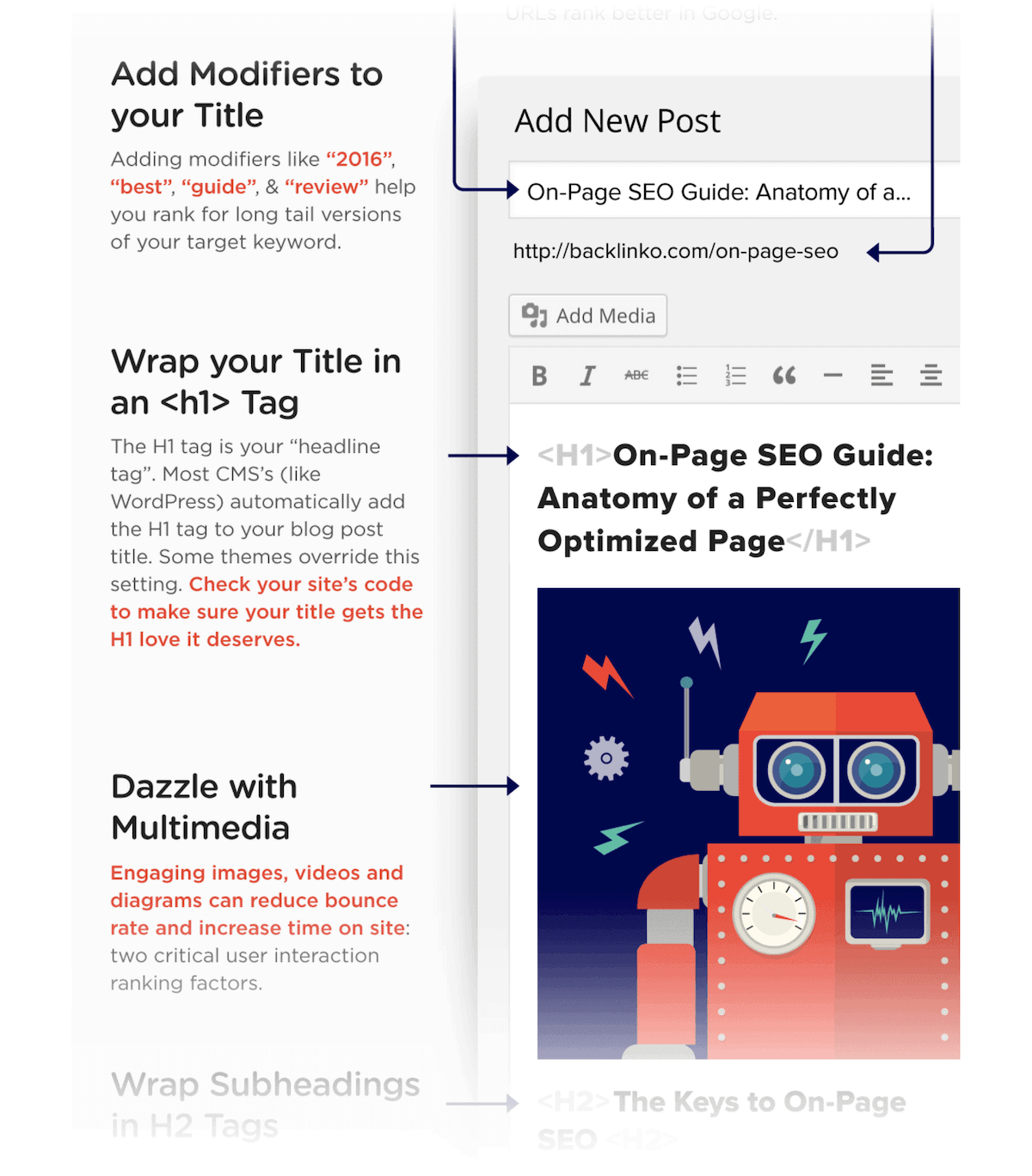
Yup, we had to do a lot of email outreach to get the word out.
But when we got this infographic in front of the right people, they were happy to embed it on their blog.

Step #8: Build Backlinks to Your Site
Publishing amazing content is great and all.
But for your content to get links people need to actually see it.
In other words:
You can’t just take a “publish and pray” approach to content marketing and HOPE that people link to you.
That’s because your content is a drop in an ocean of blog posts, videos, Instagram stories, and Facebook posts that come out every single day.
In fact, WordPress reports that 70 million new posts come out every month.

The takeaway here is that if you want people to link to your site, you need to actively promote your content.
Instead, I recommend trying these two techniques:
Find Dead Links
This is also known as “Broken Link Building.”
A great way to find broken links is to look to your competitors. Do this using Semrush’s Backlink Analytics tool.
Just enter a competitor’s domain into the tool and click “Analyze.”

Then go to the “Indexed Pages” tab and check the box next to “Broken Pages.”

These are all the broken pages on your competitor’s site sorted by the number of referring domains.
Why is this useful?
Because you can click on a number in the “Domains” column to see exactly which websites are linking to these broken pages.

Then you can reach out to them and ask them to link to your relevant page instead.
When you find a suitable broken link opportunity, email the person who runs that page a personalized version of this email script:
Hi [First Name],
I found a broken link on your page: [title].
It’s the link to [website]. It’s giving me a 404 error.
Also, I recently published a post on [topic]. It might make a nice replacement for the dead link.
Hope that helps!
Find all of your backlinks
Explore the largest, fastest, and freshest backlink management tool.
Create Resource Pages
Resource pages are GREAT for link building.
That’s because resource pages are pages that someone created to link to the best stuff on a given topic.
For example, I have a resource page designed to help people quickly learn SEO.

And this page links to helpful content about keyword research, content, and more.

So if you had an outstanding resource about SEO, I might consider adding it to that page. And giving you a backlink.
You could find similar opportunities in your niche by googling “intitle:resources + [your niche]” and reaching out to websites that have similar lists.
Like this:

Step #9: Track and Monitor Your Results
So at this point, you should start seeing your site rank higher on Google than before.
Which is great.
But how do you know if those rankings are doing anything for you?
Also:
How do you keep tabs on your SEO results without manually checking your rankings every hour?
That’s what this step is all about. I’m going to show you how to track your results like a pro.
Google Analytics Organic Traffic
Rankings are great and all. But when it comes to measuring the results of SEO marketing, NOTHING beats organic traffic.
(In other words, traffic that comes directly from search engines.)
You can track this within Google Analytics:
WP Designer: Screenshot like this for BKO highlighting the organic traffic.

Google Search Console Impressions and Clicks
This is a nice complement to the Google Analytics organic traffic report we just talked about.
This report in Google Search Console basically shows you how many people SAW your site. And how many of those people CLICKED on your site.

As you might expect, the more people that see and click on your site from Google, the better.
Leads and Sales
In other words: is this influx of traffic actually adding to the bottom line?
This is a question that many beginners gloss over. But if you want to get a huge ROI from SEO, you need to know if all these new visitors are turning into customers.
There are a million and one ways to track this. But one way is through GA4’s key events:

Step #10: Include Meaningful Visuals
Including visuals can help you rank higher in search results. And provide a better user experience.
That’s a win-win.
Here’s an example of two of my images ranking in Google Images for a competitive term:

You can use charts and graphs to illustrate data sets. Or add high-quality images to show off a location or product or other physical thing.
Or add a graphic to illustrate a complex concept. Like I have done with this graphic from my post on website architecture:
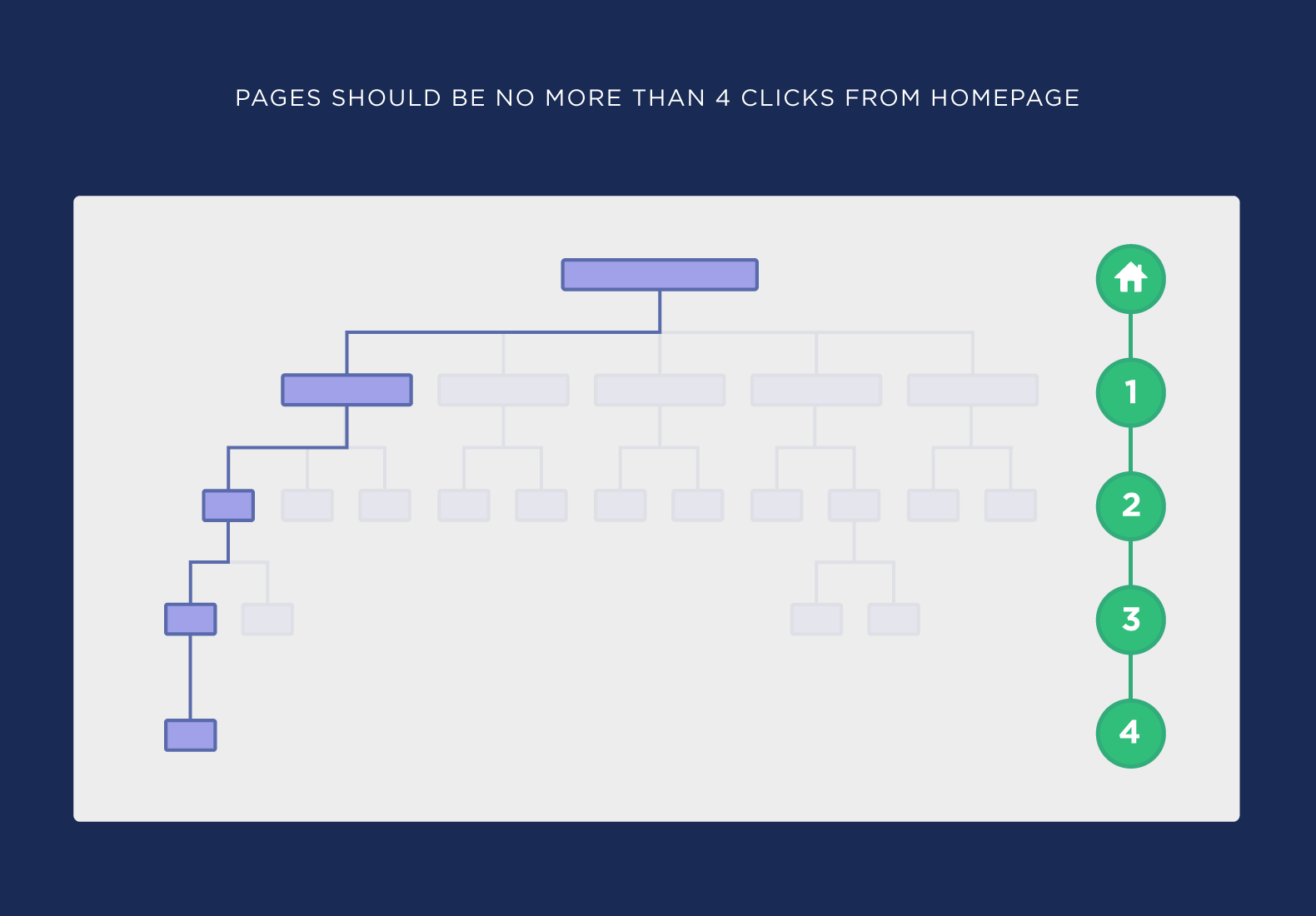
It’s a fairly simple visual that helps readers understand what can be a tough concept.
While these visuals can help add value for your readers, they also provide GREAT opportunities to build backlinks as they’re highly shareable.
Plus, Google sometimes provides featured snippets with images. Like this:

A rich result like this can boost your click-through rate if it’s an engaging image (or two).
Brian’s Pro Tip: Niche Context and Relevance
In some instances, Google interprets visuals as the most suitable form of meeting search intent. Queries such as “How to…” tend to tap into video content, and get rewarded with higher rankings. Research thoroughly to suitably adapt depending on the niche.
Step #11: Make Your Information Skimmable
A study on website engagement found that, on average, people spend 54 seconds on a webpage.
Do you know what this means?
You’ve got less than a minute to make an impression on your website visitors. Despite people spending more time online, there’s lots of information to consume and only the best results attain engagement.
To stand out, use precise, understandable sentences.
Write in active voice, embrace the use of bullet points, and use subheadings to break the text into easy-to-read chunks.
Lastly, don’t forget to add visuals to further appeal to the site users (see previous step).
Bonus Step #1: Boost Your Click-Through-Rate
We may not be able to confirm that Google uses click-through rate as a direct ranking factor. But there’s no doubt that you want to get as many clicks (from the right audience) as possible anyway.
So how can you do that?
Here are a few simple ways to boost your CTR:
Use Emotional Title Tags: In other words, titles that stand out.
Here’s an example:

Use Short, Descriptive URLs: These are good for SEO in general. But they also help users see your page as a great fit for their search.

Target Rich Snippets: Rich Snippets (like stars) really help your site stand out in search results.

Compelling Meta Descriptions: Your meta description should “sell” your page.

Bonus Step #2: Use Internal Linking
Want an easy way to improve your Google rankings?
Use internal linking.
In other words:
Link FROM one page on your site TO another page on your site.

For example, I’m currently on page 3 for the term “Google Search Console.”

And considering how many people search for this keyword every month, even moving up few spots could make a difference for me.

So to increase the odds that this page ranks, I could add an internal link to that page whenever I mention Google Search Console on other pages.

Rinse and repeat for all of your high-priority pages.
Why Is It Important to Rank High on Google? Top 4 Benefits
It’s achievable and highly beneficial to rank high on Google and other search engines. These are the top four benefits of ranking high on Google:
- Get More Organic Clicks: Statistically, top search results acquire an average CTR of 27.6%. And the number one result for a search query is 10x more likely to get a click than the page in position #10.
- Reduced Marketing Costs: Inbound marketing takes time as it involves building durable relationships with customers by tailoring content and information relevant to potential leads. Higher Google rankings can significantly reduce the time and resources needed to reach a bigger pool of leads.
- A Positive Business Reputation and Image: High organic traffic endorses a brand’s image by communicating trust and quality in a product/content to both existing and potential clients. In short, the top ranking indicates trustworthiness, relevance, utility, and credibility.
- Competitive Edge in the Market: Bigger traffic numbers can bring more sales, better conversions, and overall brand awareness over rivals.
Take Your Site Further Up the Google Rankings
I hope you enjoyed my step-by-step guide to ranking higher in Google.
Want to take things even further?
Check out my guide packed full of actionable SEO tips to increase your rankings.
What about keeping track of your rankings once you get them?
Do that with our free keyword rank checker tool.

